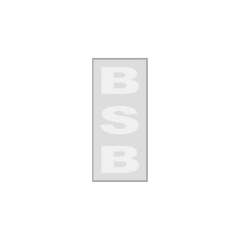Bestsellers
Shop All
- From £5.75 excl. VATUnit price excl. VAT /Unavailable
Hochiki Conventional CDX Standard Base YBN-R/6
From £1.58 excl. VATUnit price excl. VAT /UnavailableFirechief Slimline Document Holder
£28.56 excl. VATUnit price excl. VAT /UnavailableHochiki Flexi-Element for Manual Call Point
£0.75 excl. VATUnit price excl. VAT /UnavailableHochiki Addressable Photoelectric Smoke Detector ALN-EN
From £26.27 excl. VATUnit price excl. VAT /UnavailableOrange 3 Position Smoke Vent Rocker Switch
£30.61 excl. VATUnit price excl. VAT /UnavailableHochiki ESP Analogue Addressable Standard Base YBN-R/3
From £1.68 excl. VATUnit price excl. VAT /UnavailableHochiki Hinged Cover for Call Point
£3.63 excl. VATUnit price excl. VAT /UnavailableHochiki Conventional Call Point 3-Position Keyswitch with Orange Back box
£27.63 excl. VATUnit price excl. VAT /UnavailableHochiki ESP Analogue Addressable Loop-Powered Base Sounder YBO-BS
From £28.39 excl. VATUnit price excl. VAT /UnavailableKentec Sigma Doc Box - Document Enclosure
From £78.57 excl. VATUnit price excl. VAT /UnavailablePurCheck Smoke Detector Tester (4.6oz)
£14.59 excl. VATUnit price excl. VAT /UnavailableButton Guard+, Emergency Push Button, Twist to Reset with N.O. & N.C. Contacts
£39.27 excl. VATUnit price excl. VAT /UnavailableFyreye Ultra-Violet Flame Detector with base
£151.45 excl. VATUnit price excl. VAT /UnavailableInfinity ID2 60° Fixed Heat Detector
From £25.24 excl. VATUnit price excl. VAT /UnavailableHochiki Smoke/Heat Head Kit (UK only)
£1,567.26 excl. VATUnit price excl. VAT /UnavailableHochiki Surface Mounting Call Point Back Box
From £1.34 excl. VATUnit price excl. VAT /UnavailableHochiki Conventional Call Point Key Switch 2 Position with Red Back box
£25.38 excl. VATUnit price excl. VAT /UnavailableHochiki Conventional Call Point with Back Box Orange "Smoke Vent"
£14.42 excl. VATUnit price excl. VAT /UnavailableHochiki CDX Conventional Base Sounder CSB-E
From £21.92 excl. VATUnit price excl. VAT /UnavailableHochiki CDX Conventional Non-Latching Relay Base YBO-R/6RN
£16.34 excl. VATUnit price excl. VAT /UnavailableHochiki Fixed Temperature Heat Detector - White DFJ-AE3
£18.87 excl. VATUnit price excl. VAT /UnavailableHochiki Addressable Multi-Sensor - Photoelectric and Heat ACC-EN
From £29.30 excl. VATUnit price excl. VAT /UnavailableHochiki ESP Analogue Addressable Manual Call Point With Isolator HCP-E(SCI)
£28.75 excl. VATUnit price excl. VAT /UnavailableHochiki Addressable Call Point PCB
£24.44 excl. VATUnit price excl. VAT /UnavailableHochiki Sensor Mounting Base-White
£1.68 excl. VATUnit price excl. VAT /UnavailableHochiki ESP Device Programming Lead 3-WAY CONNECTOR
£5.36 excl. VATUnit price excl. VAT /Unavailable- £21.62 excl. VATUnit price excl. VAT /Unavailable
- £3.90 excl. VATUnit price excl. VAT /Unavailable


















































































